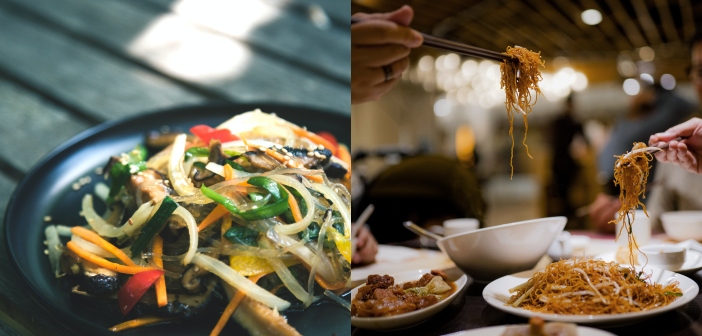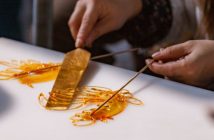Growing up in Korea for 15 years, I am familiar with most Korean cuisines and always enjoy having them. After coming to China, I was excited to try new different Chinese dishes but also concerned at the same time that I wouldn’t get to have Korean dishes anymore.
However, those concerns were useless because not only did I find lots of Korean restaurants that make the same taste I’ve had back in Korea, but also lots of Chinese cuisines that look similar to Korean foods.
It was the time I visited a Chinese restaurant called Grandma’s Home 外婆家 Wai Po Jia. I was reading the menu there and was able to find some dishes that look very familiar to Korean dishes. One of them was a fried chicken with sweet lemon sauce, which looked identical to Tangsuyuk, sweet and sour pork, in Korea. Then, I realized that Tangsuyuk is a dish that originated in China and developed in Korea afterward. I felt there is a huge and deep connection between Korean and Chinese food that started a far age ago.
Korea and China are geographically close and so do share a considerable amount of history. I was curious about the way foods reflect those bonds; how much they look alike. So, I found some examples of visually alike foods from Korea and China.
Bibimbap vs. Chinese Chao Fan

Bibimbap is a food that is consist of vegetables, rice, and sauce. For vegetables, people usually put bean sprouts, spinach, zucchini, carrots, and mushroom. The sauce is a spicy sauce called gochujang. Depending on your preference, you can add anything you want such as meat, and fried egg, also adjust the amount of gochujang depending on your spice level. Bibimbap is neither fried nor steamed, you just mix the ingredients and eat it right away. Chao fan is a fried dish that usually includes rice, vegetables, soy sauce, and oyster sauce. The biggest difference between bibimbap and Chao fan is that bibimbap is not fried and has red and spicy sauce, unlike Chao fan which mostly has a brown-ish savory sauce.
Jab Chae vs. Chinese Chao mian

Jab Chae is a Korean traditional food that I ate on every holiday in Korea, especially on Chuseok – Korean Thanksgiving Day. I remember my grandmother always made me Jab Chae using her hand every time I visit her house. Therefore, whenever I eat Jab Chae, I feel the friendly and nostalgic mood of my grandma’s house. One characteristic of Jab Chae is its sweet taste which makes me mouthwatering already. Chao Mian is a Chinese-style noodle that meat and tofu are often added. You may find Chao mian all over china states with different styles. The visual of Jab Chae and Chao mian does look very similar however, one difference I noticed is that Jab Chae is always made of glass noodles while Chao mian usually uses white flour noodles.
Jeon vs. Egg Foo Yung

Jeon is a Korean side dish that has numerous types. It is made by dipping the ingredient in watery flour dough and frying it. Whatever you put in the jeon, that becomes the name of the jeon. For example, if you put meat, it becomes meat jeon, and if you put kimchi into the dough, it becomes kimchi jeon. Egg foo yung is a Chinese egg dish, particularly in Guang Dong. One thing different from Jeon is that foo yung uses egg to coat the ingredients before cooking on a wok: it’s more like an omelet.
Galbijjim vs. Dong po Rou

Galbijjim is one of my favorite Korean foods. When I was young, I thought Galbijjim was a special food that I can only eat on special days like holidays because it takes a long time and needs lots of effort to make. It is made of beef short ribs, which are so soft that melt in my mouth, and a sweet and savory sauce. Dong Po Rou is a pork belly dish with also a sweet and savory sauce. The first time I tried Dong Po Rou, I was first surprised by its visual which looks like galbijjim and surprised again with its similar sauce. However, Dong Po Rou has a more sticky and chewy texture because of the pork belly.
Jjamppong vs. Malatang

Jjamppong is a Korean Chinese-style dish with spicy soup, seafood, and noodles. Although it’s a Chinese-style dish, actually can be found only in Korean restaurants. Its spicy soup, noodles, and diverse type of seafood make Jjamppong look similar to malatang in china. Malatang also has a spicy soup but is totally different from Jjamppong. Its spiciness is from a spice called huajiao (花椒), which makes your mouth tingle when you eat it. Also, if you go to a malatang place, they typically have diverse ingredient choices, which let you decide what to put in your malatang!
Images: Unsplash, Pexels, Shen Hong Fei, Hyejin Kim, Katie Coy



